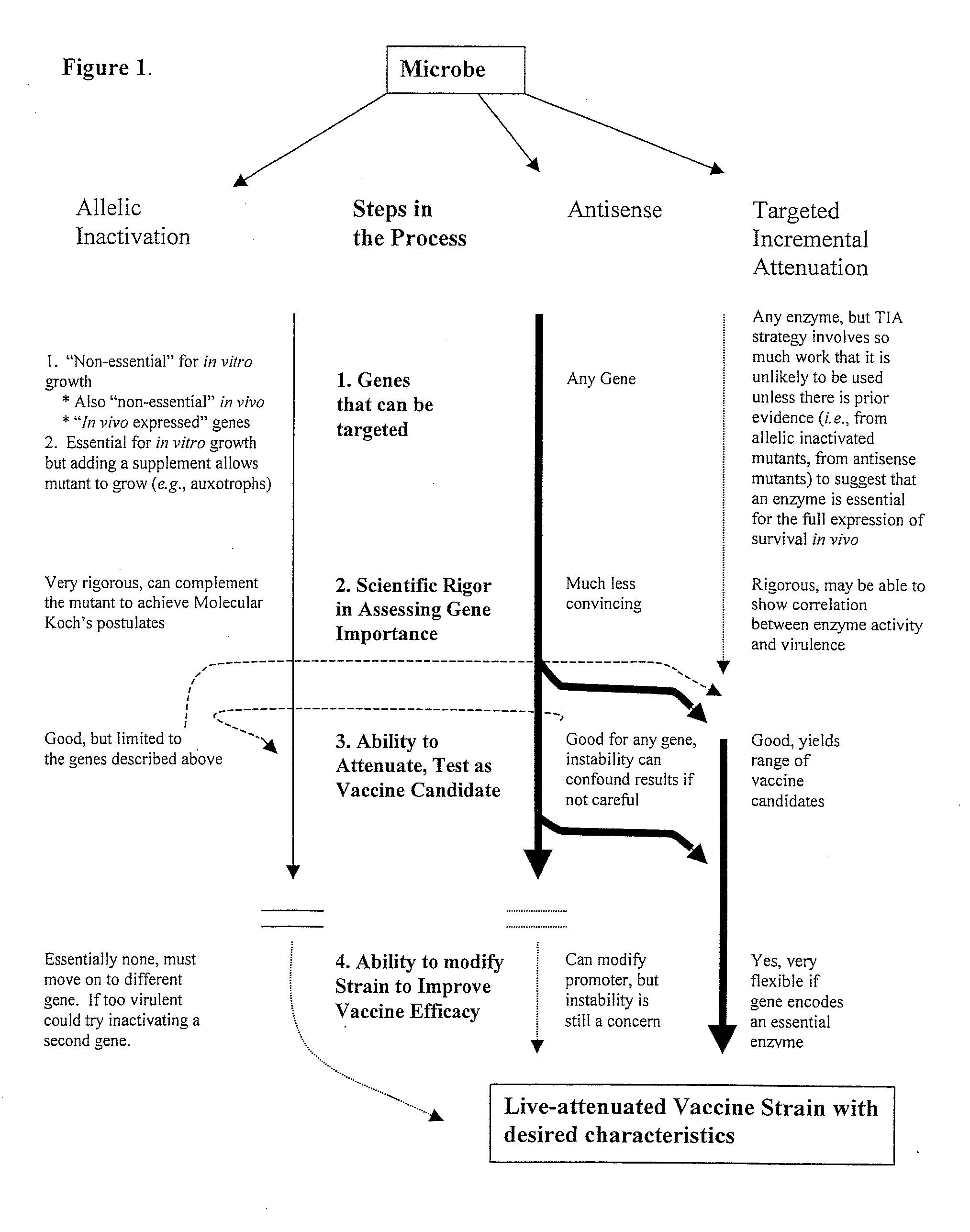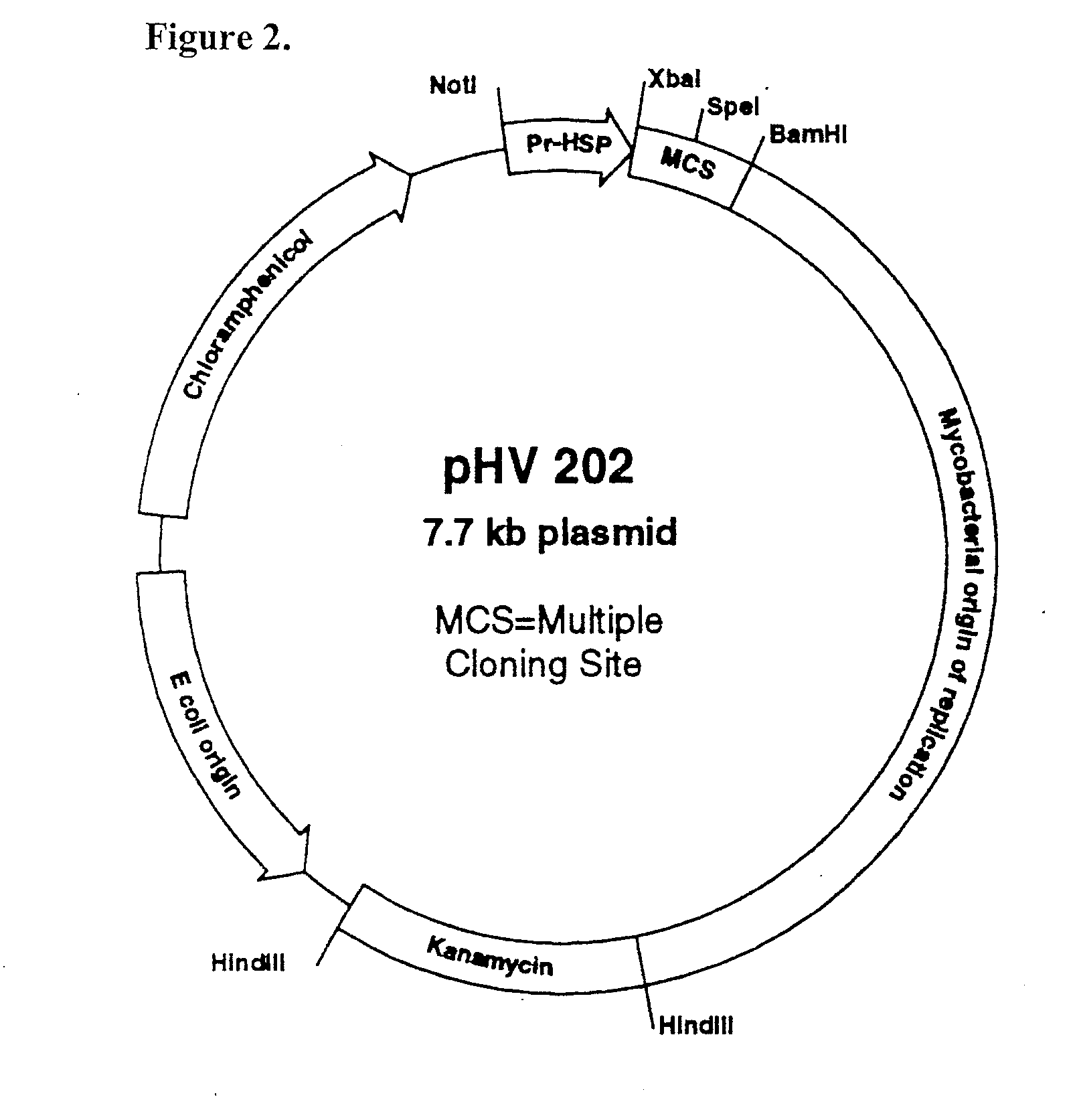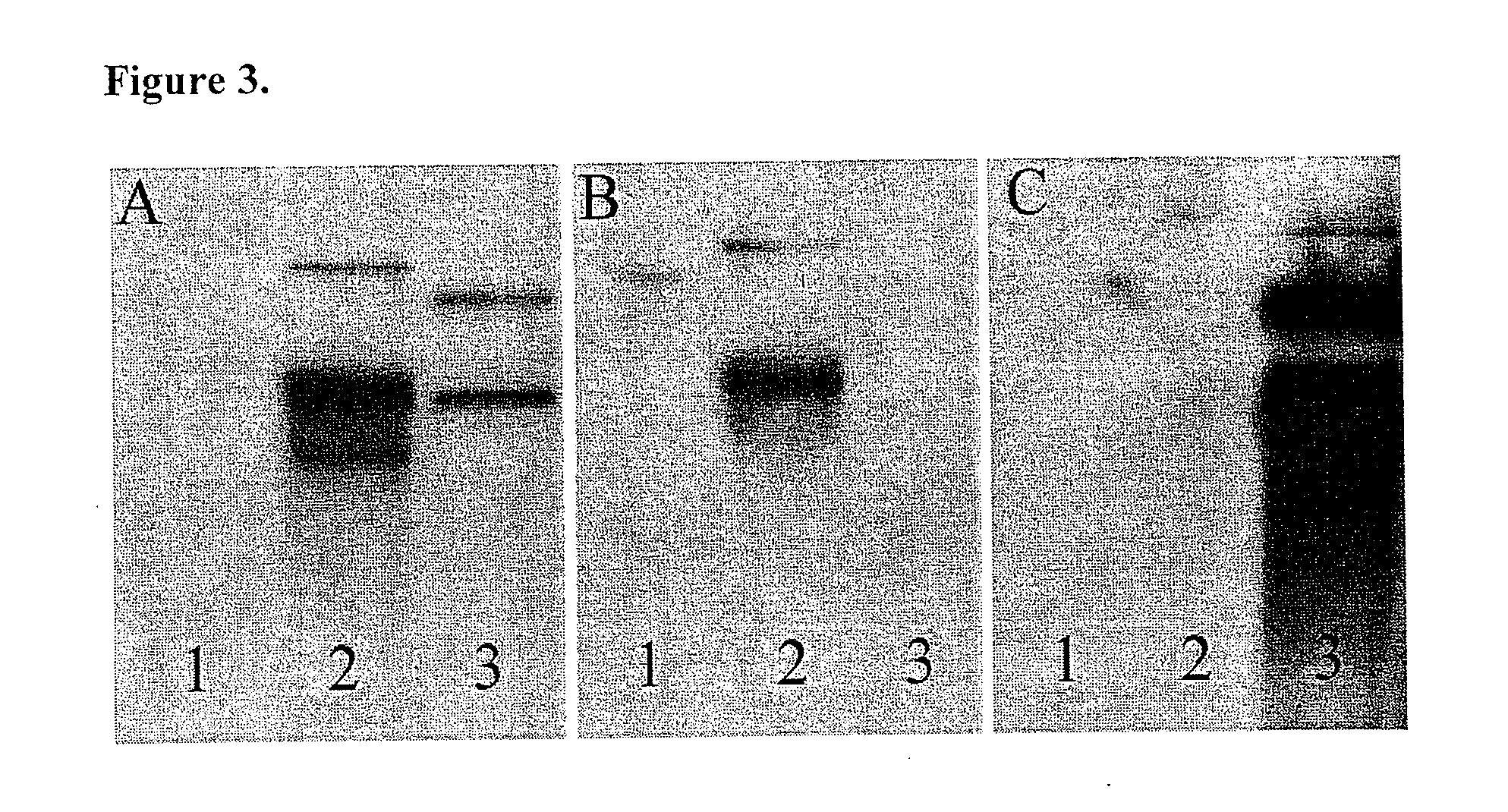Pro-Apoptotic Bacterial Vaccines To Enhance Cellular Immune Responses
a bacterial vaccine and cellular immune response technology, applied in the field of vaccine production and preventing or treating infectious diseases, to achieve the effects of reducing the intracellular survival of microorganisms, enhancing antigen presentation, and improving vaccine efficacy
- Summary
- Abstract
- Description
- Claims
- Application Information
AI Technical Summary
Benefits of technology
Problems solved by technology
Method used
Image
Examples
example 1
Construction of Sod-Diminished M. tuberculosis (Hereafter Called “Bacillus Vanderbilt-VA”, or “BVV”) and Documentation of its Attenuation In Vivo Methods
[0174]Bacterial Isolates, Plasmids, Chemicals, and Culture Media:
[0175]Bacterial isolates and plasmids used are shown in Table 1. E. coli strain DH5α was used as the host for molecular genetic manipulations unless otherwise indicated and was grown in LB media (Gibco / BRL, Gaithersburg, Md.). M. smegmatis mc2155 and M. tuberculosis H37Rv were grown in Middlebrook 7H9 liquid media (Difco Laboratories, Detroit, Mich.) supplemented with 0.2% glycerol and 10% Middlebrook OADC enrichment (Becton Dickinson & Co., Cockeysville, Md.) or plated on Middlebrook 7H10 agar (Difco) supplemented with glycerol and OADC. Kanamycin at a concentration of 50 μg / ml or 25 μg / ml, respectively, was used to select for transformants containing pHV202, pLUC10, or their derivative plasmids in E. coli DH5α or M. tuberculosis H37Rv.
[0176]Construction of a Shuttle ...
example 2
Comparison of the Attenuation of BVV to that of the Current Vaccine for Tuberculosis, BCG (Bacillus Calmette-Guerin) Methods
[0204]In another experiment, the clearance of mycobacteria after infection with BCG (Tice strain) and H37Rv(pLUC10-AS-SOD) was compared. Each of the two experimental arms were divided into groups segregated by caging based on whether the group was to be sacrificed on day 1, 4 weeks, 8 weeks, 12 weeks, 16 weeks, or 72 weeks post-inoculation. Inocula were administered via a lateral tail vein. Euthanasia and the harvesting of organs were performed as described above.
Results.
[0205]Comparative Clearance of Sod-Diminished H37Rv Versus BCG (Tice):
[0206]Next, it was determined whether the declines in viable bacilli observed in the first 28 days with SOD-diminished strains were sustained over a longer duration of time by comparing the clearance of H37Rv(pLUC10-AS-SOD) to the clearance of another attenuated M. tuberculosis complex strain, BCG Tice. Inocula of 3.8×106 cfu...
example 3
Comparison of the Vaccine Efficacy of BVV to BCG
[0210]Next, BVV and BCG Tice were compared as vaccines. Six weeks following IV vaccination, C57Bl / 6 mice were challenged with an intranasal inoculum of the virulent Erdman strain of M. tuberculosis, delivering an inoculum of 104 to 105 cfu to the lungs as assessed by enumeration of bacilli in the lungs of mice sacrificed on Day 1 post-challenge. This was a very rigorous challenge, as vaccinated mice are much more susceptible to virulent M. tuberculosis administered aerogenically than by the IV route (North, LaCourse, and Ryan, 1999) and we used a large inoculum. For example, in other recent trials involving new vaccine candidates, Jackson et al. used an IV challenge (Jackson, Phalen, Lagranderie, Ensergueix, Chavarot, Marchal, McMurray, Gicquel, and Guilhot, 1999) whereas Hondalus et al. challenged with 5 to 10 cfu by aerosol (Hondalus, Bardarov, Russell, Chan, Jacobs, Jr., and Bloom, 2000). Detailed enumeration was performed over the ...
PUM
| Property | Measurement | Unit |
|---|---|---|
| time | aaaaa | aaaaa |
| time | aaaaa | aaaaa |
| time | aaaaa | aaaaa |
Abstract
Description
Claims
Application Information
 Login to View More
Login to View More - R&D
- Intellectual Property
- Life Sciences
- Materials
- Tech Scout
- Unparalleled Data Quality
- Higher Quality Content
- 60% Fewer Hallucinations
Browse by: Latest US Patents, China's latest patents, Technical Efficacy Thesaurus, Application Domain, Technology Topic, Popular Technical Reports.
© 2025 PatSnap. All rights reserved.Legal|Privacy policy|Modern Slavery Act Transparency Statement|Sitemap|About US| Contact US: help@patsnap.com



